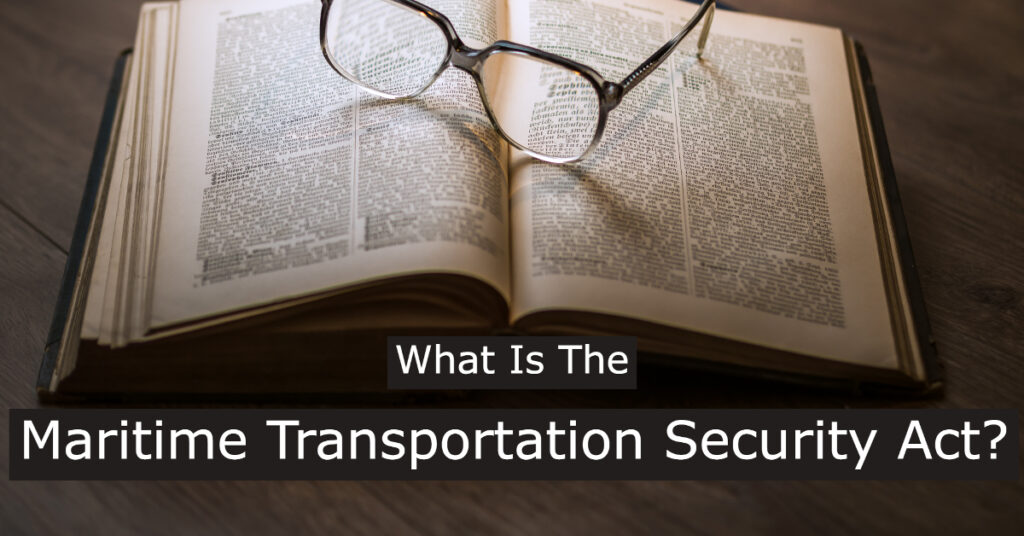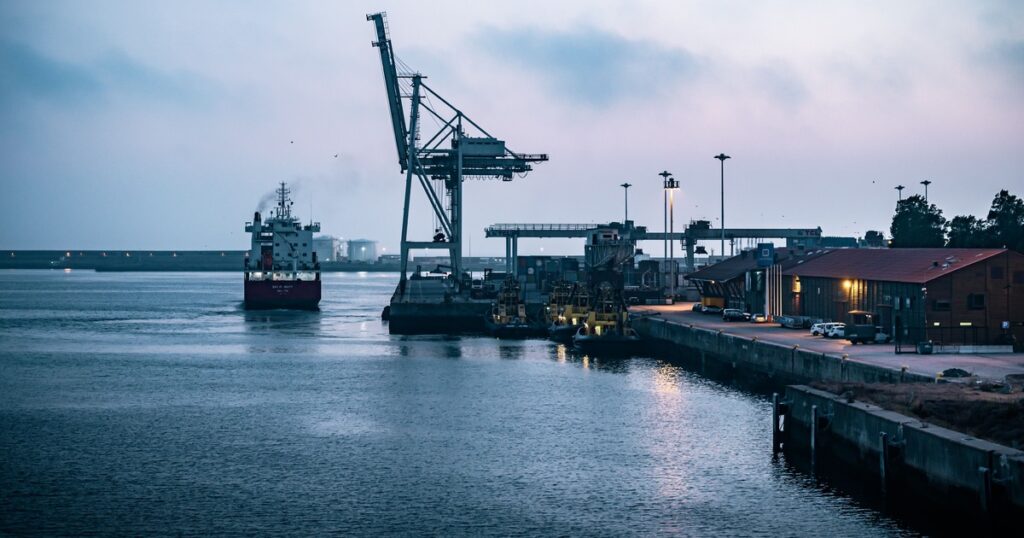The Maritime Transportation Security Act (MTSA) is arguably the most important legislation regulating overseas travel. The United States Congress passed the MTSA in 2004 and has since made many updates. This guide takes an in-depth look at the MTSA’s crucial role in ensuring the safety of maritime workers and vessels worldwide.

The Passing of the Maritime Transportation Act
When Congress first passed the MTSA on November 25, 2002, it replaced the outdated Merchant Marine Act from 1936 and aimed to protect the growing American maritime industry from emerging obstacles. These obstacles included workplace safety concerns, environmental hazards and security threats.
The 9/11 attacks a year earlier changed the nation’s attitude about overseas travel and the MTSA was one of the U.S. government’s primary counter-terrorism efforts to address people’s anxiety. The MTSA established new regulations and a new hierarchy to reinstill confidence in international trade.
The United States controlled about 95% of overseas commerce in 2002 and there were 361 major seaports in the country at the time. Imports for 2004 were valued at approximately $1.5 million, while exports were valued at $814 million. Officials estimated these numbers would double by 2022 and they were correct.
Fast-forward to today and the MTSA covers 587 seaports, 469,686 facilities and 778,633 U.S. vessels. These include the busiest ports in the country and, by extension, the entire world. Imports for 2021 were valued at $3.1 trillion and exports were valued at $2.5 trillion.
The MTSA is an essential part of global maritime safety standards even though it technically doesn’t apply outside U.S. borders. The United States is the world’s leader in overseas trade, so any country that wishes to import goods there must follow the MTSA when it reaches American waters.
In the years following the 9/11 attacks, the U.S. worked with other global powers to establish new international regulations that closely connect with the MTSA. For example, the International Ship and Port Facility Security Code (ISPS Code) and the Procedures for Port State Control are essential legislations that update annually.
Congress also passed other laws, such as the Chemical Facility Anti-Terrorism Standards (CFATS) in 2007. This act regulates more than 300 chemicals of interest that could be weaponized in a terror attack. The MTSA also addresses chemical and biological agents, but the CFATS specifically targets high-risk facilities the MTSA doesn’t.
In this way, the MTSA, CFATS, ISPS Code and many other new safety standards play unique roles but share the goal of protecting international trade from terrorist groups. Twenty-two years after 9/11, there continues to be a declining trend of security incidents in the maritime industry thanks largely to these legislations.
Key Provisions of the MTSA
The MTSA’s primary purpose is to prevent transportation security incidents (TSIs) in American maritime trade at home and abroad. These TSIs include loss of life, environmental harm, economic disruptions and transportation system disruptions. Although terror threats are the main focus, the ocean is a dangerous place where many things can go wrong.
For example, cargo vessels lose thousands of containers at sea yearly and often develop unsanitary conditions during long voyages. The MTSA aims to prevent these incidents as well as explosive, chemical or biological attacks. Such a diverse group of problems requires a variety of key provisions.
- Vessel and Facility Security Measures
This provision makes up the bulk of the MTSA. It lays out all the specific requirements for security plans and vulnerability assessments, namely establishing access control protocols in restricted areas. Reliable access control requires thorough employee background checks and advanced security technology.
The latter effort to implement the latest security technology is much more important today than 20 years ago. Cybersecurity threats are more potent than ever and many of the world’s commercial ships are getting too old to accommodate new technologies. Fortunately, the development of new cargo vessels will turn cybersecurity from a weakness into a strength.
- Port Security Grant Program
For ports and vessels to afford new security measures, the MTSA established a grant program that allocates $100 million annually to state, local and private-sector partners. The grant program updates every year with new parameters. There are some strict eligibility requirements to join this program.
Partners can include port authorities, facility operators and government agencies that deal with maritime transportation. Some of the most common positions that get security grants are terminal operators, ferry systems, harbor pilots and merchant’s exchanges. The funding mainly goes toward security planning, equipment investments and employee training.
- Cargo Security
This provision of the MTSA deals with container security initiatives. Most cargo ships carry more than 1,000 containers at a time, creating many smuggling opportunities. The MTSA’s cargo inspection protocols aim to minimize these opportunities and prevent the trafficking of illegal goods. Agents with the Transportation Security Administration, Department of Homeland Security and U.S. Customs and Border Protection collaborate with customs officials in other countries to complete thorough cargo screenings, including 100% of all cargo deemed as “high risk.”
- International Cooperation
Speaking of other countries, global trade partners with the United States play many crucial roles in the MTSA’s enforcement. Borderless legal entities such as the International Maritime Organization and the International Convention for the Safety of Life at Sea (SOLAS) keep American vessels safe when traveling in foreign waters.
A special class of Recognized Security Organizations also undertakes many security activities on behalf of these organizations. They can approve or amend vessel security plans, verify compliance with MTSA regulations and conduct complete port facility inspections as the contracting authority instructs.
- Personnel Training and Awareness
The final provision of the MTSA sets training and awareness requirements for maritime employees. The best strategy for meeting these requirements is the implementation of training exercises and educational materials, which largely falls on international organizations because of their global influence.
The International Convention on Standards of Training, Certification, and Watchkeeping for Seafarers is the main legislative body that certifies employees. This organization has set the bare minimum global standards for maritime security training since 1978. It offers certifications in first aid, proficiency in survival craft and ship security.

MTSA Security Plans
The MTSA takes a layered approach to maritime security, outlining a plan for port facilities and the vessels themselves. Both include the following features:
- Responsibilities and duties of MTSA officials
- Employee training requirements
- Transportation Worker Identification Credential (TWIC) requirements
- Drill & exercise requirements
- Recordkeeping requirements
- Maintenance of security equipment
- Declaration of security procedures
- Requirements for audits and amendments
Each plan also includes several considerations, including critical assets, vulnerabilities, the most likely types of attacks, the consequences of those attacks and the appropriate mitigation strategies. Here are the main requirements of the facility and vessel security plans.
- Facility Security Plan
A facility security plan is required for all ports subjected to 33 CFR 126, 127 or 154 outlined in the MTSA. It also applies to facilities that receive commercial vessels with more than 150 passengers, vessels larger than 100 gross register tons or vessels under SOLAS jurisdiction. Every major shipyard in the country meets one — if not all — of these parameters.
- Vessel Security Plan
Similarly, the vessel security plan applies to foreign and domestic cargo ships under SOLAS jurisdiction with more than 150 passengers or a weight of 100+ gross register tons. It also applies to mobile offshore drilling units and smaller barges carrying dangerous cargo such as weapons or toxic chemicals.
MTSA Officials
The MTSA introduced a new hierarchy to address the leadership gaps in the pre-9/11 security infrastructure. This hierarchy included a handful of new positions that would play key roles in the years to come.
- Company Security Officer
Every vessel subject to MTSA regulations must appoint one or more TWIC-certified company security officers (CSOs) to lead the security efforts on board. This position’s responsibilities include conducting security assessments, developing contingency plans, arranging Coast Guard inspections, raising security awareness among the crew, and ensuring proper communication and coordination.
- Facility Security Officer
The facility security officer (FSO) is responsible for developing and updating the facility security plan to ensure it meets the MTSA’s regulations, which require frequent assessments and constant vigilance. This position also acts as a liaison between the CSO and Coast Guard officials when they cannot directly interact.
- Vessel Security Officer
The vessel security officer (VSO) plays effectively the same role as the FSO, except the focus is only on a single ship instead of the entire facility. Vessel security plans can vary widely based on the number of crew, cargo types and the ship’s architecture. This position is fourth in the chain of command behind the FSO, CSO and shipmaster.
Transportation Worker Identification Credentials
These MTSA leadership positions have distinct responsibilities, but they have one thing in common — they must be TWIC certified. All personnel must earn a TWIC certification to gain unsupervised access to MTSA-regulated facilities and vessels. The Transportation Security Administration is responsible for handing out these certificates.
To make TWIC certifications as secure as possible, identification cards are designed to be tamper-resistant and contain the employee’s fingerprints. Additionally, possessing a TWIC card doesn’t guarantee access to restricted areas. Employees must have proper identification and get written authorization from a superior.
Aside from the CSOs, FSOs and VSOs, many other employees must have a TWIC. Even low-level positions such as truck drivers, contractors, merchant mariners and dockers need proper credentials to access MTSA-regulated areas. These simple preventive measures are critical for stopping security breaches in their early stages.
Making the Sea a Safer Place
The Maritime Transportation Security Act of 2002 began a new era in overseas travel. The 9/11 attacks gave the U.S. and other global powers a rude awakening and exposed the weakness of their security protocols. The MTSA — with the help of international legislation — works to make the sea a safer place and ensure no such attack ever happens again.
Frequently Asked Questions
Why did the United States pass the Maritime Transportation Security Act?
The United States passed the MTSA in response to the 9/11 terror attacks. Although 9/11 was an aerial attack, this tragedy made it clear the U.S. had some significant security vulnerabilities in all forms of international travel. Congress passed the MTSA to bolster security efforts in maritime transportation.
Who falls under MTSA jurisdiction?
All vessels and facilities on American borders are subject to MTSA jurisdiction, including foreign vessels importing goods. If a ship from another country wants to make port here, it must follow the necessary security procedures.
Has the Maritime Transportation Security Act been effective?
Yes, the MTSA has played a key role in reducing the number of maritime security incidents in the last 20 years. However, this legislation is just one piece of the puzzle. Global initiatives such as the International Maritime Organization and the International Convention for the Safety of Life at Sea also deserve recognition.
What are the main features of the MTSA?
The MTSA has five key components — vessel and facility security measures, port security grant program, cargo security, international cooperation, and personnel training and awareness. These provisions aim to address all potential transportation security incidents, including terrorist attacks, environmental hazards and poor working conditions.
How has the MTSA impacted the development of maritime security plans?
The MTSA introduced a layered approach to developing maritime security plans, accounting for new factors such as the statistical likelihood of security breaches in certain areas. It also introduced three new leadership positions to ensure compliance with regulations and avoid miscommunication among vessels and facilities.
- The 15 Most Exciting New Ships of 2025 – January 6, 2025
- How Old Do You Have to Be to Drive a Boat? – November 12, 2024
- The Engineering Behind Ice-Class Vessels – September 20, 2024



